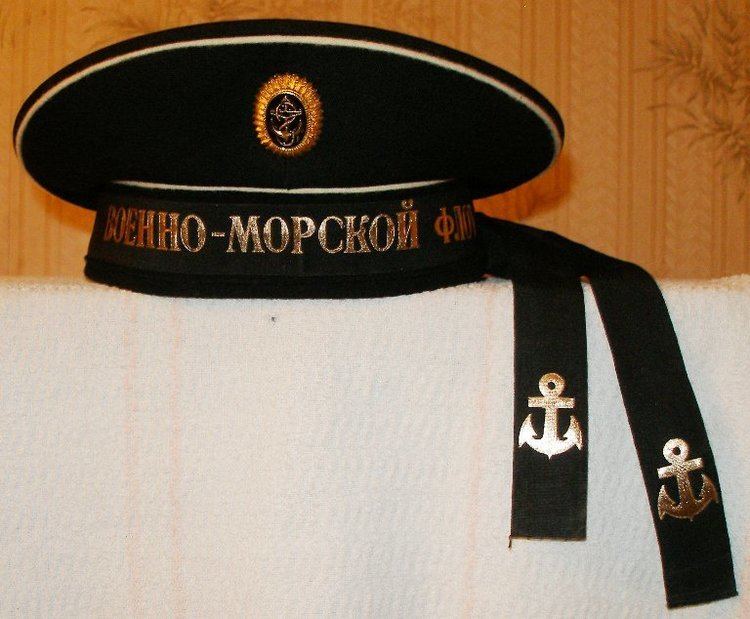 | ||
A sailor cap is a round, flat visorless hat worn by sailors in many of the world's navies. A tally, an inscribed black silk ribbon, is tied around the base which usually bears the name of a ship or a navy. Many navies (e.g. the German) tie the tally at the rear of the cap and let the two ends hang down to the shoulders as decorative streamers. In the Royal Navy the tally is tied off in a bow over the left ear and in the early 20th century it was customary when going on shore leave to tie a small coin in the bow to make it stand out. In wartime, as a security measure, many navies replace the name of the ship with a generic title (e.g. "HMS" = "His/Her Majesty's Ship" in the Royal Navy or "South African Navy"). The cap may be further embellished with a badge, cockade or other accessory. Visorless caps of this kind began to be worn in the mid 19th century.
The more rigid type of sailor hat with a wide, flat peak is also known as square rig (this refers generally to a type of sailor uniform) cap or pork pie (not to be confused with the brimmed pork pie hat). Until after World War II it was customary in most navies to wear a removable white cover over the dark blue cap in tropical or summer conditions only. This has been retained but as the cap is now generally a formal or dress item the white cover is worn all year around. The German Navy version of the sailor cap has a raised front in contrast to the flat top favored by the Royal Navy.
The sailor cap was first introduced in September 1811 as a part of the uniform of the Russian Navy (bezkozyrka, ru. бескозырка, non-peaked hat), at the same time as an identical forage cap was adopted by the Russian Army. All ranks of the Russian navy of this period wore military style uniforms and the bezkozyrka was a useful development of the peaked cap in practical application to marine conditions.
The French Navy's version of the sailor cap, with its distinctive red pompom on top, was adopted about 1848. Worn initially as an ordinary duty alternative for the formal leather hat with turned up side, the cap has survived as a dress item until the present day. The Belgian Navy adopted the same pattern of cap, but with light-blue pompom and trailing ribbons, on 29 March 1939.
United States Navy, Bolivian and Venezuelan sailors wear a white canvas hat with an upright brim, often referred to as a "Dixie cup" in reference to its similarity to the shape of a common disposable drinking cup, or a "gob hat" or cap. This hat was also worn by Polish Navy sailors before 1939—it was called the "amerykanka" ("American hat") or "nejwihetka" (derived from the English phrase "Navy hat").
